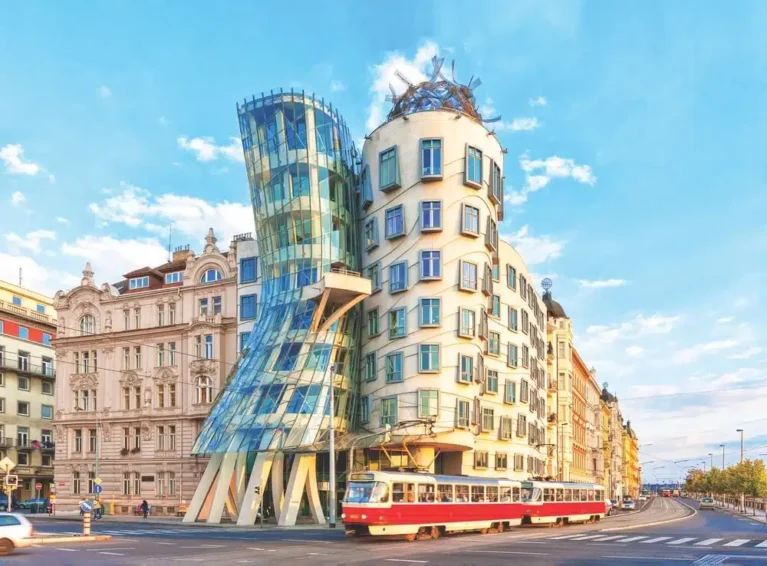Czech Republic
Top Five
-
12 Day Bulgaria, Serbia & Romania Tour
Discover local flavors Learn about traditional tracks Escorted tours High quality accommodation
-
12 Day Classic Romania
Discover local flavors Learn about traditional tracks Escorted tours High quality accommodation
-
12 Day Albania, Montenegro, Croatia & Slovenia
Discover local flavors Learn about traditional tracks Escorted tours High quality accommodation
-
13 Day Turkish Treasures with Cappadocia
Discover local flavors Learn about traditional tracks Escorted tours High quality accommodation
-
12 Day Central Europe with Warsaw & Krakow
Discover local flavors Learn about traditional tracks Escorted tours High quality accommodation
Czech Republic
Planted firmly in the heart of Central Europe, the Czech Republic is culturally and historically more closely linked to Western, particularly Germanic, culture than any of its former Eastern-bloc brethren. The most popular tourist destination in the region, Prague was discovered shortly after the fall of the Iron Curtain. But the stunning medieval towns in southern Bohemia and the famous spa resorts of the west are just as approachable. Travelers looking to get off the beaten path may wish to head for Moravia, the lesser-visited region in the eastern Czech Republic.
Prague
One of Europe’s best-preserved cities, Prague has a romantic riverside location enhanced by graceful bridges and a magnificent skyline punctuated with medieval church spires. Its historic Old Town follows a plan laid out 1,000 years ago, with ancient squares and winding cobblestone streets. Haunting Prague Castle looms large across the Vltava River, rising above the exquisite Charles Bridge. Add extravagant, fairy-tale architecture; memorable classical music; and, these days, good food and drink, and it’s easy to see why Prague charms everyone who visits.
Karlovy Vary
Karlovy Vary—often known outside the Czech Republic by its German name, Karlsbad—is the most famous of the Bohemian spas. It’s named for the omnipresent Emperor Charles IV, who allegedly happened upon the springs in 1358 while on a hunting expedition. As the story goes, the emperor’s hound fell into a boiling spring and was scalded. Charles had the water tested and, familiar with spas in Italy, ordered the village of Vary to be transformed into a haven for baths. The spa reached its golden age in the 19th century, when aristocrats from all over Europe came for treatments. The long list of those who “took the cure” includes Peter the Great, Goethe, Schiller, Beethoven, and Chopin. Even Karl Marx, when he wasn’t decrying wealth and privilege, spent time at the wealthy and privileged resort; he wrote some of Das Kapital here between 1874 and 1876.
Pulling off an extraordinary comeback after decades of communist neglect that left many buildings crumbling into dust behind beautiful facades, Karlovy Vary drips with luxury once again. Much of the reconstruction was led not by Czechs, but by Russians. Since the days of Peter the Great, Karlovy Vary has held a deep fascination for Russians, and many of them poured their newly gained wealth into properties here—so much so that Karlovy Vary’s sleepy airport boasts nonstop service from Moscow several times a week, and four-fifths of the properties are actually Russian-owned. Don’t be surprised to hear Russian spoken widely in the streets or see it used as the second language, after Czech, on restaurant menus.
Karlovy Vary’s other vehicle in luring attention and investment has been its international film festival, which began in 1946. Every year during the first week of July, international stars and film fans flock here. Recent attendees include Oliver Stone, John Travolta, and Helen Mirren. If you’re planning on visiting during the festival, line up your hotel room well in advance. Unless you’re a true film buff, you’re better off coming on a different week.
Whether you’re arriving by bus, train, or car, your first view of the town approaching from Prague will be of the run-down section on the banks of the Oh?e River. Don’t despair: continue along the main road, following the signs to the Grandhotel Pupp, until you are rewarded with a glimpse of the lovely main street in the older spa area, situated gently astride the banks of the little Teplá (“Warm”) River. (Drivers, note that driving through or parking in the main spa area is allowed only with a permit obtained at your hotel.) The walk from the new town to the spa area is about 20 minutes.
The Historická ?tvrt (Historic District) is still largely intact. Tall 19th-century houses, with decorative and often eccentric façades, line the spa’s proud riverside streets. Throughout, you can see colonnades full of people sipping the spa’s hot sulfuric water from funny drinking cups with piped spouts.
Western Bohemia
Once upon a time, Western Bohemia was known as the playground of Central Europe’s rich and famous. Its three well-known spas, Karlovy Vary, Mariánské Lázn?, and Františkovy Lázn? (also known by their German names, Karlsbad, Marienbad, and Franzensbad, respectively), were the annual haunts of everybody who was anybody: Johann Wolfgang von Goethe, Ludwig van Beethoven, Karl Marx, and England’s King Edward VII, to name but a few.








